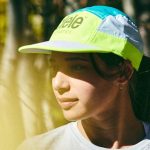Overall Snow Sports sales for both specialty and chain stores were down 3% in dollars to $1.46 billion for the August through December period of 2006, compared to $1.50 billion reported last year, according to the SIA Retail Audit. Unit sales were down 9%.
Total sales at specialty stores, chain stores and via the Internet climbed to $1.69 billion for the August through December period. Sales at specialty ski and snowboard shops were down 4% in dollars compared to last season. In dollars, that translates to $1.11 billion in sales compared to $1.15 billion in 2005.
“Strong sales in the Rockies, California and the Pacific Northwest helped offset the declines to the East. The industry continues to see growth in integrated ski systems up 6% and winter apparel up 8% over last season,” said Christine Martinez, market research manager for SnowSports Industries America (SIA), the not-for-profit industry trade group that represents manufacturers and distributors of snow sports products.
New for this season, the SIA Retail Audit now tracks the Internet channel of distribution. For the August through December period of 2006, snowsport Internet sales totaled a significant $234.9 million.
Unit sales were down from last season 8%. The SIA Retail Audit, conducted by Leisure Trends Group, tracks and reports sales in all snow sports product categories. This is the third report of six that look at sales through March 31, 2007, the end of the winter season.
Specialty apparel sales (including tops, bottoms, suits and snowboard) remained ahead 8% in dollars as compared to the same August through December period last year. By the end of December 2006, apparel sales had reached $403.6 million outselling equipment sales by $29 million. Insulated parka sales rose 19% in dollars with sales reaching $119.6 million by the end of December 2006.
Womens insulated parkas led the category with $58.2 million in sales
outselling mens insulated parkas nearly 1.5 to 1. Junior insulated parkas outsold mens by 8,000 units. In the insulated parka category, 60% of the adult units sold are womens. Both mens and womens insulated parkas were 45% sold-through at the end of December. Even the warm weather cant keep softshell parka sales down. Overall dollar sales jumped 29% when comparing this period to the same period a year ago. December over December sales increased 22% in dollars. From August through December 2006, softshell parkas earned $19.7 million in sales. In dollars, mens gained 35%, womens 19% and juniors 38%.
In softshells, 64% of the adult units sold are mens. Shell parkas declined 9% in dollars, reaching $31.0 million for the August through December period. Mens shell parka dollars, 63% of all shell dollars sold (up from 59%), decreased 3% while womens shell parkas fell 16% in dollars. Vests (no fleece) and fleece (includes vests) continue to generate the increase in sales which began three seasons ago. Dollar sales were up for both categories, 21% and 37%, respectively, over last season. Fleece managed to bring in a total of $71.5 million in sales through December 2006. Sweaters bounced back after a slow season last year with a 5% dollar gain and $12.8 million in sales thus far this season. Carryover top sales actually declined 37% in dollars. Through December, carryover accounted for 4% of all dollar sales, down from 7% last season.
Overall, alpine apparel tops grew 15% in dollars. Alpine bottoms, however, fell 4% in dollars, hurt by this seasons warm weather. All alpine bottoms were just 38% sold-through at the end of December. Junior bottoms contributed a dollar gain of 6%. Stretch waist pant dollars increased 5%. Apparel suits continue to decline, dropping 21% in dollars. Junior alpine apparel sales look promising with dollar increases in insulated parkas (up 16%), softshell parkas (up 38%) and bottoms (up 6%). Snowboard apparel sales dipped 2% in dollars reaching $62.6 million in sales by the end of December 2006. At the end of December, the category was 48% sold-through (compared to 52% last year) with approximately 523,000 units remaining in specialty store retail. Snowboard tops are showing promise this period over last, up 4%. Womens snowboard tops and bottoms saw significant dollar increases over last season for the same period, 17% and 7%,
respectively.
Womens snowboard tops grew from 29% of all top dollars sold to 33%. Junior snowboard top dollars increased 13% over last season. Through December, snowboard tops outsold snowboard bottoms by a ratio of just 1.1 to 1. Compare that to alpine tops which outsold alpine bottoms 3.4 to 1 in the same period.
The accessories category in specialty stores dropped for the first time this season, down 7% in dollars and reaching $331.9 million by the end of December 2006. The apparel accessories category saw sales decrease 4% over the same period last year, reaching a total of $193.9 million by the end of December 2006. Turtlenecks (up 5%) and winter boots (up 5%) were the only categories to see dollar increases. Equipment accessory sales declined 11% with considerable declines in dollar sales coming from sunglasses (down 20%), snowshoes (down 40%) and wax (down 28%).
From August through December 2006, snowboard equipment sales (including snowboards, boots and bindings) were down 16% in dollars with sales reaching a total of $127.2 million. Snowboards (down 13% totaling $60.9 million in sales), boots (down 18% totaling $34.8 million) and bindings (down 17% totaling $31.5 million) all experienced dollar decreases this season over last.
All mountain boards jumped 27% in dollar sales reaching $8.5 million in sales by the end of December 2006. All mountain boards accounted for 14% of all board dollars sold (up from 9% last season at this time). Freestyle boards, the largest category, accounting for 44% of the units and 48% of the snowboard dollars, fell 14% in dollars while freeride boards dropped 27% in dollars. Last season at this time, freeride boards accounted for 38% of all snowboard dollars; this season just 32%. Carryover snowboard sales jumped 38% in dollars and increased their share of the market from 5% of the units to 9%. They still accounted for just 6% of the dollars. At the end of December, 214,000 snowboards remained in specialty retail inventory and were 50% sold-through as compared to 55% sold-through at the end of December 2005.
Snowboard boots were 43% sold-through at the end of December. Snowboard boot carryover sales nearly doubled this season. Fortunately, those increases were from a small base and carryover boots only accounted for a small 6% of all boot dollars sold. Through December, carryover bindings accounted for 8% of all units (up from 4%) sold. At the end of December, all snowboard bindings were 47% sold-through, down from 54% at the end of December 2005.
Overall equipment sales (alpine, snowboard, Nordic, Telemark and Randonee/AT) were down 11% in dollars as compared to last season with sales totaling $374.1 million from August through December 2006. In specialty stores, sales of alpine equipment (including skis, ski systems, boots, bindings and poles) fell 7% in dollars this season over last. For the first time ever, adult integrated ski systems outsold bindingless skis.
This December, 55% of all adult skis sold were systems (48,000 units) compared to bindingless skis with 39,000 units sold and just 45% of the sales. Just five seasons ago, ski systems accounted for only 11% of all ski units sold.
Through December, integrated ski system sales totaled $65.3 million, an increase of 6% in dollars when comparing this August to December period to the same period a year ago. Nearly 144,000 pairs were sold this period at retail. At the end of December, 185,000 pairs remained in inventory and the category was 44% sold-through, down from 47% at the end of December 2005. The fatter a system, the faster it sold.
Adult midfat systems, 50% of all system dollars sold (up from 44%) surged 21% in dollars. While still a small category, fat and super fat systems floated up 134% in dollars. Junior ski systems surged 66% in dollars.
Bindingless junior skis still outsold systems more than 3 to 1. Add integrated systems to alpine skis and total alpine ski sales fell 3% in dollars and totaled $116.4 million from August – December 2006. Bindingless alpine skis fell 13% in dollars over last season, ending December 2006 with $51.0 million in sales. At the end of December, 259,000 alpine skis remained in specialty retail inventory (compared to 223,000 at the end of December 2005) and the category was just 41% sold-through as compared to 49% at the end of December 2005.
Twintip skis gained 11% in dollars, reaching $8.2 million in sales for the period of August December 2006. At the end of December, twintip skis were 38% sold-through, compared to 47% at the end of December 2005. Twintips now account for 16% of all alpine ski dollars. The topline twintip category now includes both freestyle and all-mountain twintip skis. In previous seasons, only freestyle twintips were tracked. Through December, carryover ski sales jumped 37% in dollars as retailers attempted to unload excess stock.
Season-to-date, carryover skis accounted for 9% of all ski dollars sold, up from 6% a season ago. From August through December 2006, total alpine boot sales declined 8% in dollars ($91.0 million in sales). Through December, approximately 54,000 more pairs of boots were sold than skis and systems combined. Dollars increased for adult high performance boots (up 1%) but fell for adult sport performance boots (down 23%), adult soft boots (down 79%), adult recreation boots (down 17%), and junior boots (down 13%). At the end of December, 525,000 adult alpine boots sat in specialty retail inventory, up from 453,000 at the end of December 2005. So far, 80,000 junior boots have been sold compared to 75,000 junior skis and systems. Stand-alone binding sales dropped a hefty 21% in dollars, totaling $15.7 million at the end of December. Adult DIN 8-11 bindings fell 28% in dollars. Higher-end performance adult DIN 12-14 bindings fell 21% in dollars. Junior binding sales plunged 24% in dollars. At the end of December, 229,000 bindings sat in specialty inventory, 12% more units than at the end of December 2005. The alpine pole category also fell 3% in dollars over last season although there was a 19% unit jump in junior poles and a 4% dollar jump in carryover sales.
Nordic ski equipment sales decreased 33% in dollars this season over last. Nordic skis fell 37% in dollars while Nordic boot dollars decreased 33%. Telemark ski equipment sales fell 29% in dollars. While still a tiny category, randonee/AT equipment dollar sales are up 29% over last season.
New for this season, the SIA Retail Audit now tracks the Internet channel of distribution. For the August through December period of 2006, snowsport Internet sales totaled a significant $234.9 million. Because this is a new tracked channel, there is no historical comparison. Of the $235 million in Internet sales sold so far this season, 60% of the dollars were from apparel, 23% came from accessories and 18% were from equipment (compare that to brick and mortar specialty stores where 34% of all dollars come from equipment sales). Adult twintip skis were the best selling bindingless skis with nearly 6,000 units sold (30% of all ski units) for a total of $1.9 million in sales. With 4,000 units sold, junior skis were the second fastest selling bindingless ski category. Combined, the Nordic, telemark and Randonee equipment categories account for 15% of all online equipment dollars sold, compared to just 4% in specialty stores. Sales of alpine apparel tops totaled $118.4 million, apparel bottoms $12.6 million and snowboard apparel $6.7 million. Base layer, with $8.9 million in sales, accounted for 30% of all apparel accessories sold.















